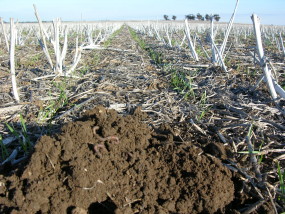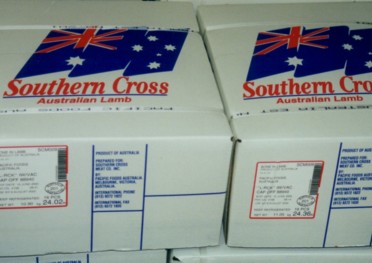GM arguments too simplistic
The Australian newspaper editorial of January 15, 2013 continues the highly simplistic thinking being used by pro-GM companies and supporters. One of the most uninformed components of their arguments is the constant reference that anti-GM is part of the green movement’s mantra. Many farmers don’t see GM food varieties as having any more valuable contribution to food production than alternative management strategies associated with improved soil health, improved marketing and financial management, and improved crop agronomy in association with rotations and variety selection.
Here is the editorial, with my reply as a letter to the editor of The Australian below it.

GM crops are food for thought
AS the Asian Century white paper noted, Asia’s demand for food is surging as populations rise and millions of families join the middle class.
The lucrative export potential for high-value Australian agriculture is obvious, but the opportunities will not automatically come Australia’s way. Leadership, enterprise, planning and investment will be vital, which is why governments, industry and the public need to engage on the subject of genetically modified food.
A welcome dose of realism has been injected into the GM food debate from an unlikely source. British environmentalist Mark Lynas, formerly an ardent anti-GM food campaigner, has recanted, admitting that his former beliefs lacked any scientific basis and insisting that the world needs GM food to avoid famine. Global food production will need to double by 2050 to feed a growing and more affluent population.
In assessing applications for GM food, Food Standards Australia New Zealand has taken a steady, cautious approach, approving genetic modifications to soybean, canola, corn, potato, sugarbeet, cotton, lucerne and rice crops since 2000. The modifications have protected crops against insects, herbicides and drought. Scope for further innovation exists, provided high safety standards are maintained.
Opposing GM technology is a cause celebre of the green movement, which claims it endangers natural and agricultural ecosystems and human health. But, as Mr Lynas argues, there is no evidence of harm arising from any of the three trillion GM meals eaten over the past decade. He regrets that as an environmentalist he could hardly have chosen a more destructive path. In developing crops that require less water and fewer pesticides, technology has much to offer the environment as well as food producers and consumers, as it has for centuries. Australia’s wheat harvest, for example, trebled after the release of the “federation strain” in 1903, developed by agronomist William Farrer to resist rust and other diseases.
Now that the whistle has been blown on the anti-GM crops movement for its fake imagery of scientists “cackling demonically as they tinkered with the very building blocks of life”, Australian agriculture, maintaining rigorous safety standards, should capitalise. The real Frankenstein’s monster was not GM technology, but the anti-scientific push against it.
Patrick Francis’ letter to editor
Your GM food editorial (January 15, 2013) highlights the simplistic nature of discussion that pro-GM advocates constantly rely on.
Firstly, that global food will need to double by 2050 is meaningless in the context of food needs of different countries. A growing list of countries have levelled off their populations and some are even declining eg Japan. Only sub-Saharan Africa countries are expected to continue escalating population growth at the current world rate, and what “high value” food from Australia will those countries be importing? Most African governments, with support from developed nations, are aiming for food self-sufficiency, that is to produce more food on their own farms by smallholders for a wide range of economic and social benefit reasons.
Secondly, Australian farmers are not carrying so much debt because of an inability to grow grains and livestock, it’s because world grain and red meat prices are too low with costs of production constantly increasing. As one grain market analyst Dr John Williams said recently: “ It is not under-supply and high prices that is ruining (Australian) grain producers and causing high occurrences of emotional anxiety, regret and avoidance, but rather excess global supply and continual low prices relative to farm input costs, which is worsened in many countries by high currency exchange rates, farm debt, subsidies, price controls, government ‘buffer’ stocks and export bans.”
Thirdly, an increasing number of farmers understand that future productivity gains across Australia’s grain belt rely more on improving soil health, particularly increasing soil organic matter which will subsequently improve soil water holding capacity and nutrient availability, rather than hoping for an elusive multi-gene trait such as drought resistance.
Fourthly, generalisations about GM crop advantages are an illusion. GM (Bt) cotton has been successful in reducing insecticide use, but so has integrated pest management with conventional varieties. Analysis of GM versus non-GM canola varieties by the Birchip Cropping Group in Victoria demonstrates the profitability of non-GM varieties is superior and that the so called herbicide use savings associated with GM canola do not exist. GM (Roundup Ready) canola is only attractive because it makes weed control simple for farmers, but simplicity has its price, particularly the development of herbicide resistant weeds which are proliferating across Australia.
Fifthly, irrespective of what scientists producing GM crop varieties might claim about their benefits, most consumers don’t want to eat foods containing ingredients from GM grains. As well, many farmers are not interested in growing GM varieties which are more expensive to buy and involve conditions of use and potential risks that are unacceptable to themselves or their neighbours. It’s why more and more farmers are banding together to add credence values to their foods, fibres, farm environments and animal welfare, then marketing these in branded products.





Well argued Pat – a lot more coherent argument from one scientist than the collective wisdom of the multi-national GM advocates. Keep it up – you have many farm supporters. Watching the topsoil of many farms disappear down rivers in the recent Queensland and NSW floods should focus attention on our most precious asset.